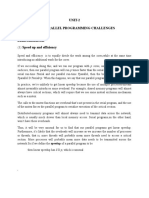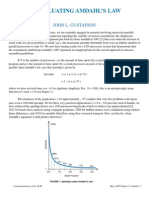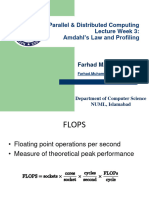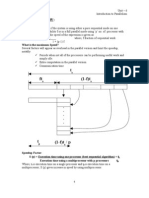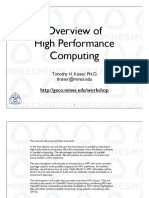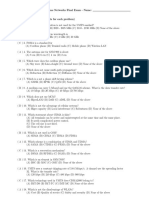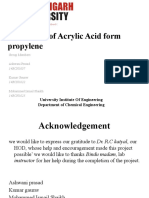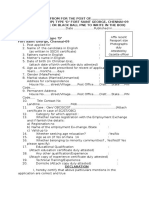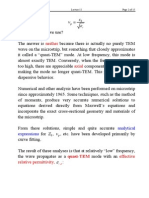0% found this document useful (0 votes)
34 views50 pagesPc7 Performance
This document discusses parallel computing performance and metrics. It introduces key concepts like speedup, efficiency, Amdahl's law, and Gustafson's law. Amdahl's law states that speedup from parallelization is limited by the sequential fraction of a program. Gustafson's law considers increasing problem sizes with more processors to achieve linear speedup. The document also discusses sources of overhead like communication that can reduce efficiency compared to ideal models.
Uploaded by
linchiCopyright
© © All Rights Reserved
We take content rights seriously. If you suspect this is your content, claim it here.
Available Formats
Download as PDF, TXT or read online on Scribd
0% found this document useful (0 votes)
34 views50 pagesPc7 Performance
This document discusses parallel computing performance and metrics. It introduces key concepts like speedup, efficiency, Amdahl's law, and Gustafson's law. Amdahl's law states that speedup from parallelization is limited by the sequential fraction of a program. Gustafson's law considers increasing problem sizes with more processors to achieve linear speedup. The document also discusses sources of overhead like communication that can reduce efficiency compared to ideal models.
Uploaded by
linchiCopyright
© © All Rights Reserved
We take content rights seriously. If you suspect this is your content, claim it here.
Available Formats
Download as PDF, TXT or read online on Scribd
/ 50


















